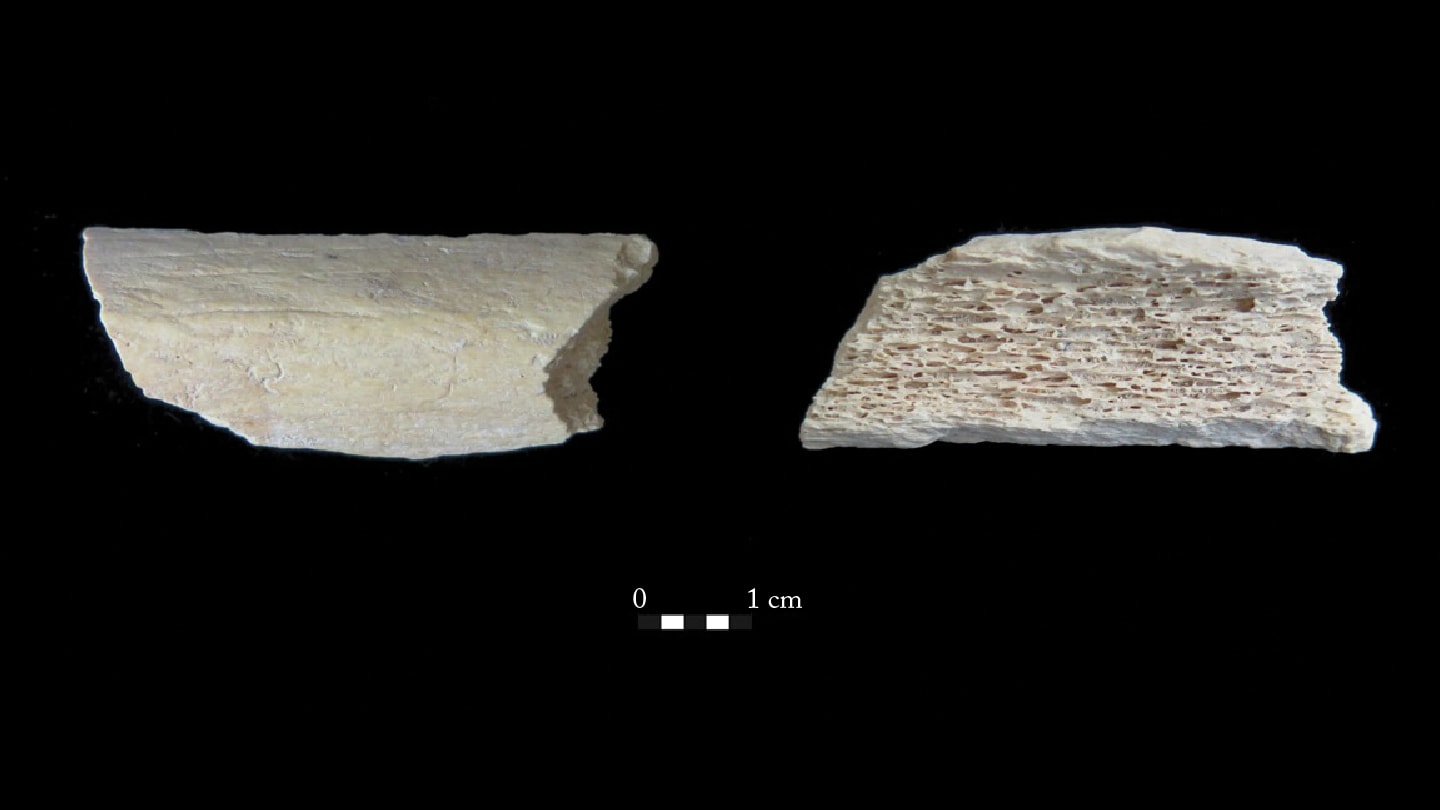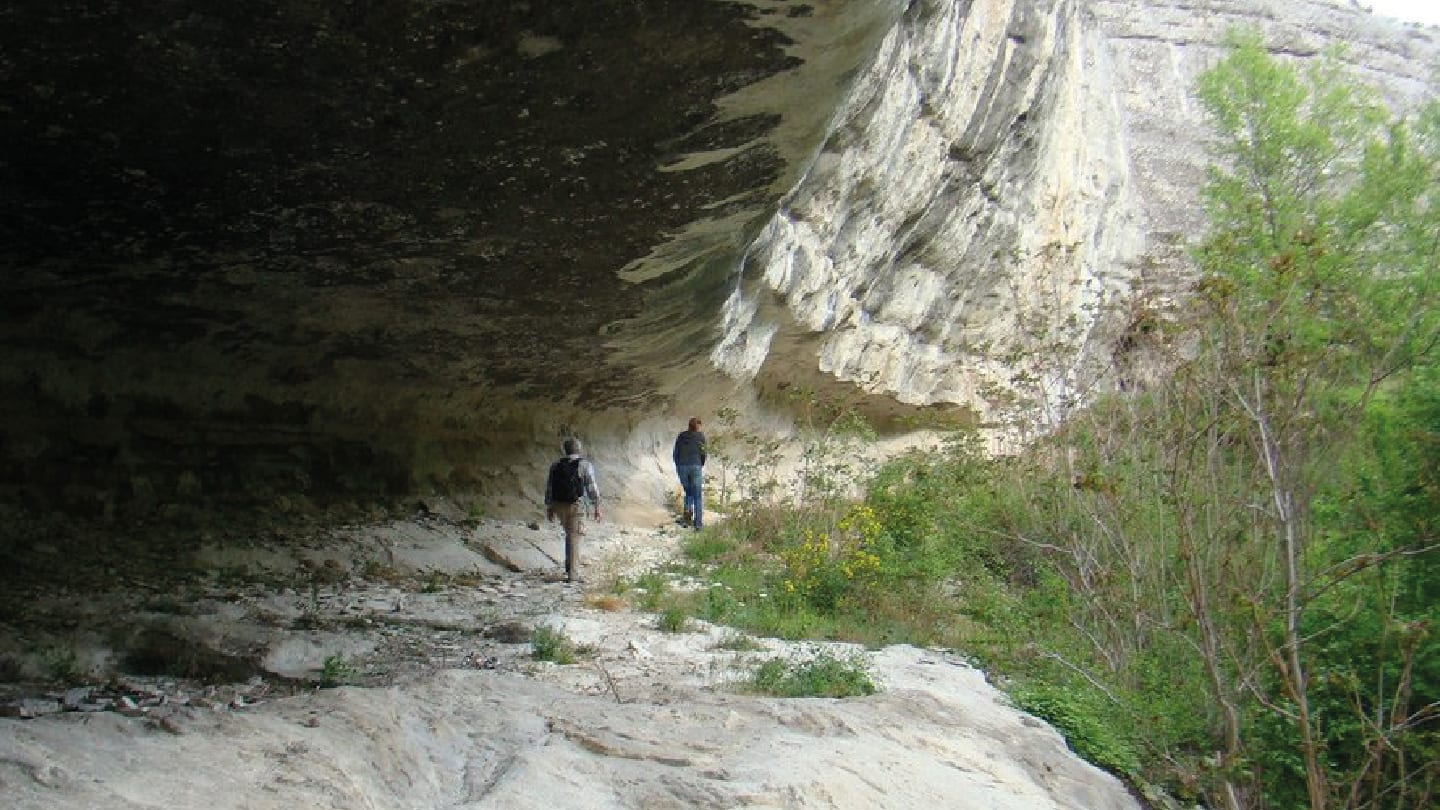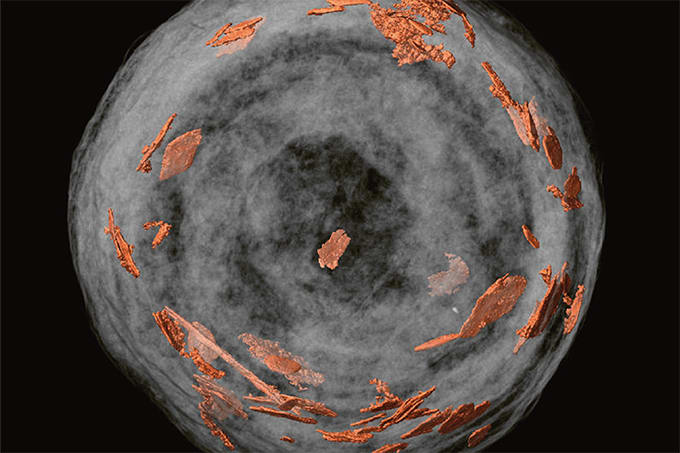
A 5-centimeter bone fragment recovered from Starosele Cave in Crimea has been identified as Neanderthal through a combination of proteomic fingerprinting, radiocarbon dating, and ancient DNA analysis. Published in PNAS, the study reveals that the individual – nicknamed “Star 1” – was genetically closer to Neanderthals from Siberia’s Altai region than to Western European populations, highlighting long-distance connections across Late Pleistocene Eurasia.
The discovery was made at Starosele Cave, a rock shelter first excavated in the 1950s but previously yielding only post-medieval human remains. Using zooarchaeology by mass spectrometry (ZooMS), a proteomic fingerprinting technique that identifies bones by analyzing their collagen peptide signatures, lead author Emily Pigott scanned over 150 fragmented bones. One small sample was identified as human and subsequently subjected to micro-CT imaging and radiocarbon dating, placing it between 46,000 and 44,000 years old, during the Late Middle Paleolithic.

“This was an extremely exciting discovery, especially since previous human remains at Starosele were thought to be Homo sapiens from much later periods,” said Pigott in a press release. “When the radiocarbon results came back, we knew we had found a truly Palaeolithic human.”
Genetic analysis of the sample revealed it was most closely related to Neanderthals from the Altai region of Siberia, over 3,000 kilometers away, rather than to more local Neanderthal populations. According to the paper, Star 1 shows “closer affinity to Neanderthals from Mezmaiskaya and the Altai,” rather than from western Europe, indicating long-distance movement or gene flow across vast steppe corridors.
The researchers suggest that such migrations may have been climate-driven. Collaborators used climate and habitat modeling to pinpoint two periods – around 120,000 and 60,000 years ago – when favorable environmental conditions likely enabled Neanderthal dispersal across Eurasia.

Senior author Tom Higham highlighted the power of combining proteomics, radiocarbon dating, and ancient DNA: “This type of multianalytical work applied to other collections will help us uncover more hidden human remains, and bring us closer to understanding the complex story of human evolution across Eurasia.”




